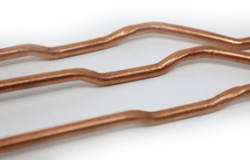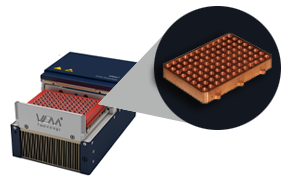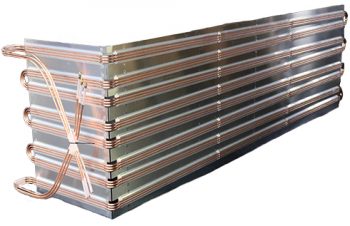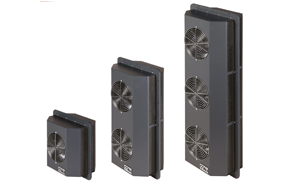Increasing demands for technical innovation and performance are key drivers for the medical industry. Next-generation medical devices need to be smaller, faster, more precise and more reliable. As a direct result of these technical enhancements, there is escalating importance to thermal management.
ACT has proven experience in the medical industry, helping product designers and manufacturers solve key thermal problems.
Specific examples include increased duty cycle, lower operating temperatures, faster thermal cycling, and precision temperature control. ACT’s thermal management experts have broad and in-depth knowledge of thermal technologies and are well versed in the intricacies and challenges of developing products for medical use. ACT has experience integrating and prototyping solutions that include state-of-the-art heat pipes, liquid cooling, thermoelectric cooling, heat sinks, interface materials and more.
Whether it’s a feasibility study, product analysis, design, prototyping or manufacturing, ACT has the Design & Analysis skills to develop your solution and the quality manufacturing systems to produce a product suitable for the most critical medical procedures.
Thermal Considerations for Medical Technology Webinar
MEDICAL APPLICATIONS
The medical industry offers diverse and unique thermal challenges, requiring the consideration of a wide range of thermal technologies. For example, surgical equipment may only need to dissipate a couple of Watts, but the spatial limitations and touch temperature requirement compound the thermal challenge considerably. Other, large-scale equipment could need to dissipate 100s of kWs and may need to consider component temperature control as well as system energy consumption.
ACT has experience in a wide range of applications including:
- Imaging Systems Thermal Control
- PCR Devices
- Diagnostic Equipment
- Surgical Devices
- Test and Measurement Equipment
- Laser diodes
- Sample Transportation Containers
- Chiller Technology
- Shelter Cooling for Medical Emergency Services
Examples of Thermal Control in the Medical Industry

Imaging equipment, such as CT scanners, requires extreme levels of temperature control. The sensors and components in these systems provide better results when operating at uniform temperatures to adjacent components. Most sensors operate on a duty cycle as the angle and orientation with respect to the patient. In many cases, the mounting plate nor the metallic heat spreader are able to maintain adequate temperature uniformity across its length. ACT has designed and implemented heat pipes in imaging devices to enhance thermal conductivity while passively controlling temperature across the contact surface of the sensors. This not only provides better cooling and consistent operating temperatures but increases the image quality.
Read more about ACT’s collaboration with GE Healthcare on CT Imaging Equipment

Polymerise Chain Reaction (PCR) devices are used routinely in the medical industry to diagnose various imperfections within blood samples. These devices were used significantly during the COVID-19 pandemic to provide reliable testing and diagnosis. Thermal cycling is an important process in the operation of PCR and transient responsiveness is a key feature. Some of the most capable devices utilize specialized vapor chamber technology to achieve this rapid response. Vapor chambers can take point loads and rapidly spread the heat across a larger surface, allowing all sample wells of the PCR to rapidly cool or heat.
Read more about ACT’s collaboration with Inheco on PCRs

Sample containers have fairly unique thermal requirements based on the specimen being transferred or stored. In many cases, the containers must maintain an active coolant to control the temperature to the level of precision required. As the containers grow in size, the thermal challenge of maintaining temperature becomes more and more challenging, often exceeding the capabilities of off-the-shelf chillers and vapor compression systems. ACT’s expertise in designing active systems has supported our customers’ ability to meet some of the most challenging requirements in temperature control for this segment of the medical industry.
Read more about ACT’s collaboration with Hamilton Storage

Electronics Control Equipment is important to the operation of many key medical equipment types. In most cases, these electronics cabinets are maintained in well-air-conditioned rooms, however, they must maintain a rated (NEMA or IP) seal to avoid moisture or debris from damaging the long-term operation of the electronics. In these cases, above-ambient Enclosure Coolers such as ACT’s Heat Sink Cooler (HSC) provide a low-cost, readily available product option that can easily be integrated, increasing both the reliability and longevity of these systems.
Read more about ACT’s Heat Sink Cooler Product Line
ACT’s products have been used in a wide range of applications, providing systems designers and end-users with benefits including:
- Reduction of device operating temperature, resulting in:
- Higher reliability
- Increased duty cycle
- Precision temperature control
- Reduction of device surface temperature for patient contacting surfaces
- Faster thermal cycling
- Low maintenance
- Low energy consumption
- Passive thermal systems such as heat pipes operate silently
- High power or high heat flux component cooling
